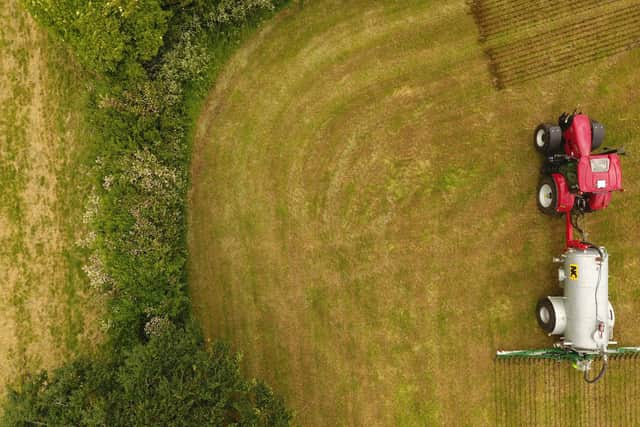Be mindful of water sources this slurry spreading season
and live on Freeview channel 276
That’s why NI Water is advising farmers to take extra care this season when spreading slurry to ensure nearby water quality is not impacted.
Slurry contains nutrients like phosphorous (P), nitrogen (N) and ammonia (NH 3 ) all of which can harm water quality if excessive amounts make their way into our lakes and rivers. P and N can both lead to algal blooms which reduce biodiversity and can cause fish kills. NH 3 is potent and can also cause fish kills by reducing oxygen available in the water.
Advertisement
Advertisement
To protect the environment, ensure your soils are tested to decide the correct application levels of fertilizer or if your field needs slurry or not. You should use your Soil Nutrient Health Scheme (SNHS) results and run-off risk maps to plan your applications. If you need to calculate your farm’s P balance or slurry nitrogen loading, then use the Crop Nutrient recommendation calendar on the DAERA website.


Roy Taylor, NI Water Catchment Manager, said: “It is crucial that farmers take care in timing and placement of slurry, manure and fertiliser at this time of year. This is essential to minimise the potential for loss from land to water. Steep slopes and soils with impeded drainage are vulnerable to runoff and losses during rainfall events. A rainfall event lasting only a few hours can deliver a large proportion of the total annual loading of phosphorus to rivers and lakes.
“If slurry is spread on poor, very wet ground or during or just before wet weather conditions, it can run off the land; this results in valuable nutrients ending up in our watercourses. Removing this from our water is not only difficult, but it is expensive to treat, in order to provide the high-quality drinking water we all expect.”
To reduce the risk to water quality, from 1 st March do not spread slurry within:
- 250m of a borehole used for public water supply;
- 50m of a spring, well or borehole;
- 20m of a lake;
- 10m of a waterway other than a lake (3m if using LESSE)
Advertisement
Advertisement
To ensure less wastage of your slurry supplies, you should adhere to the maximum spreading rate of 50m 3 / hectare and not apply slurry on:
- Waterlogged soil or land likely to flood.
- Frozen ground.
- Steep slopes (an average incline of ≥20% on grassland, ≥15% on other land)
- If heavy rain is forecast within the next 48 hours.